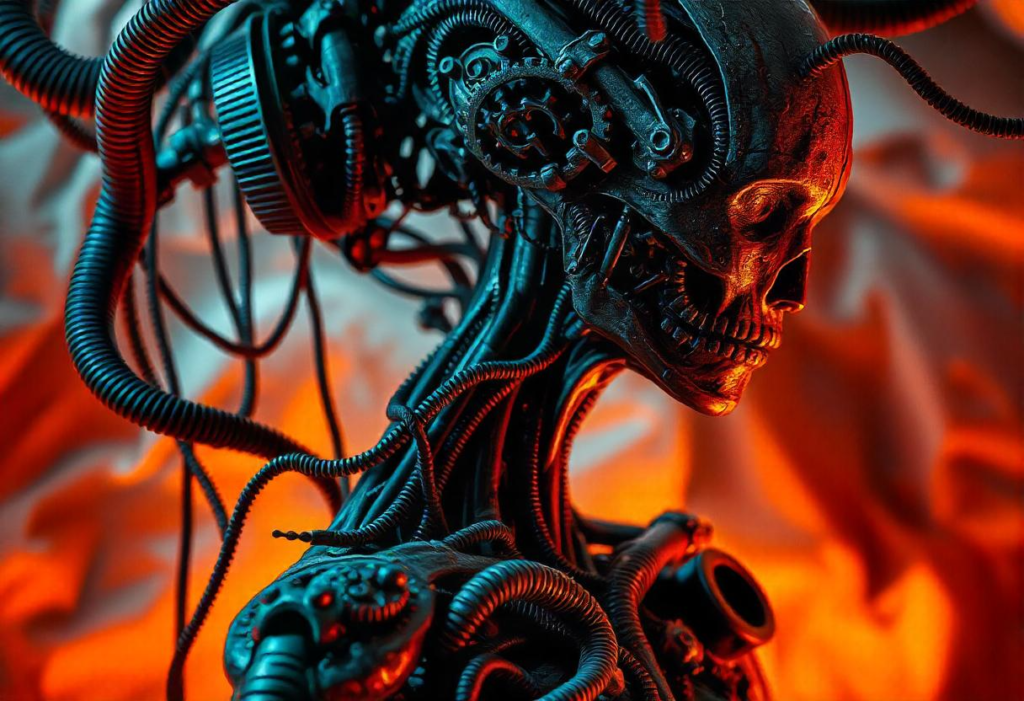HR Giger, an iconic figure in modern art, left an indelible mark on the world of surrealism and science fiction with his unique “biomechanical” style. Known primarily for his Oscar-winning designs for Alien (1979), his creations continue to inspire audiences worldwide. His masterpieces blend the organic and mechanical in ways that are as fascinating as they are unsettling. Delving deeper into HR Giger’s life, work, and legacy unveils a world brimming with dark creativity, intricate details, and a profound vision of the fusion between humanity and technology.
Who Was HR Giger?
Hans Ruedi Giger, better known as HR Giger, was born on February 5, 1940, in Chur, Switzerland. From a young age, Giger showed an inclination toward the macabre and the surreal. His early fascination with science fiction coupled with his artistic upbringing led to the creation of a unique visual style that defied traditional classifications.
While initially studying architecture and industrial design, Giger transitioned to the fine arts, honing his skills and developing a style often described as a synthesis of the fantastic and the grotesque. As his fame grew, so did his influence, eventually making him a household name in the realms of art, film, and popular culture.
HR Giger’s Biomechanical Art
At the heart of HR Giger’s work lies “biomechanical art,” a term coined to describe his distinct style of seamlessly merging the biological and the mechanical. Giger’s pieces often depict otherworldly beings that straddle the line between man, machine, and alien.
Key Features of Biomechanical Art:
- Organic Meets Machine Aesthetic: Giger’s works often incorporate tubes, tendrils, and metallic components into flesh-like forms.
- Surreal Landscapes: The backgrounds of his works are equally detailed, often depicting sprawling, alien environments.
- Dark Themes: His art delves into existential questions, mortality, and humanity’s relationship with technology.
- Psycho-sexual Imagery: Many of Giger’s works explore primal fears and human vulnerability, often through unsettling depictions of human anatomy.
One cannot help but marvel at the meticulous detail Giger infused into his creations. Every line, shadow, and highlight reveals an element of his distinct vision—a world both frightening and fascinating.
HR Giger’s Connection to the Alien Franchise
One of HR Giger’s most significant contributions to pop culture was his work on Ridley Scott’s Alien. In the mid-1970s, Giger was commissioned to create the extraterrestrial creatures and the environment for this groundbreaking film.
Contributions to Alien (1979):
- Xenomorph Design: Giger’s most recognizable work was the design of the alien creature, the Xenomorph, which became an iconic figure in science fiction.
- Alien Egg and Facehugger: The eggs and the parasitic facehugger were also conceptualized with Giger’s signature biomechanical aesthetic.
- Derelict Spaceship: The mysterious, haunting atmosphere of the derelict spacecraft seen in the movie is entirely Giger’s creation.
His work on Alien won him an Academy Award for Best Visual Effects, cementing his legacy as a master visionary. Without Giger’s eerie and sophisticated designs, the film’s impact would have been significantly diminished.
The Evolution of HR Giger’s Artistic Style
Giger’s art evolved throughout his career, but his thematic focus on the fusion of flesh and machine remained consistent.
Notable Milestones in His Artistic Journey:
- 1960s and Early Works: Influenced by surrealists like Salvador Dalí, Giger’s early paintings leaned toward existential dread and macabre storytelling.
- The Necronomicon: Giger published Necronomicon in the 1970s, an art book featuring some of his most influential works, including concepts that inspired Alien.
- Museum Giger: His work became so iconic that a museum dedicated to him was established in Gruyères, Switzerland, housing his vast collection of art, sculptures, and personal pieces.
HR Giger’s Influence on Popular Culture
Few artists have had as profound an influence as HR Giger. His unique vision is not confined to paintings but has permeated countless forms of media.
Films and Media Inspired by Giger:
- Beyond Alien, his designs have influenced video games such as Dark Seed, which directly uses his biomechanical style.
- Elements of his aesthetics can be found in Species (1995) and Prometheus (2012).
- Musicians, including Korn and Dead Kennedys, have used his surreal works for album covers.
Giger’s ability to cross genres and mediums highlights the universal appeal of his creations. Whether it’s horror, science fiction, or even music, his dark but alluring style finds a home in countless artistic expressions.
HR Giger’s Legacy
Even after his death in 2014, HR Giger’s legacy lives on through his art, museum, and the widespread influence of his biomechanical aesthetic. Modern artists, filmmakers, and designers continue to pay tribute to his groundbreaking vision, ensuring his work will inspire generations to come.
The Museum HR Giger remains a pilgrimage site for fans of his work. Walking through its halls feels akin to stepping into one of his paintings—a surreal, immersive experience that bridges the gap between art and reality.
Why HR Giger’s Work Matters Today
In a world increasingly shaped by technology, Giger’s work serves as a haunting reminder of both the promises and perils of technological progress. The fusion of man and machine—a concept so deeply woven into his art—resonates deeply in an age dominated by artificial intelligence, robotics, and biotechnology.
His ability to tap into universal human fears and present them through the lens of art is what makes HR Giger more relevant than ever.
Key Highlights from HR Giger’s Career
- Won the Academy Award for Best Visual Effects for Alien.
- Published Necronomicon, an influential art book that showcased his biomechanical masterpieces.
- Opened Museum HR Giger in Gruyères, Switzerland, cementing his contribution to art and culture.
- Designed album covers for bands like Emerson, Lake & Palmer (Brain Salad Surgery).
- Inspired countless films, games, and creative projects with his aesthetic.
5 Fascinating Facts About HR Giger
- Childhood Interest: Despite his dark creations, Giger’s early passion lay in science fiction comics and futuristic architecture.
- Dreams as Inspiration: Much of his work was based on dreams and nightmares, which he painstakingly brought to life.
- H.R. stands for Hans Ruedi: Although widely known by his initials, Giger retained his Swiss roots throughout his life.
- Precision Through Airbrush: Giger pioneered the use of the airbrush to achieve his surreal and hyper-detailed style.
- Collaborations with Film Legends: He worked with Ridley Scott, Dan O’Bannon, and other creative titans in the industry.
You may also like: MyCentral In: The Ultimate Guide to Features and Benefits
Conclusion
HR Giger’s life and work epitomize the fusion of art, technology, and imagination. Through his biomechanical style, he created worlds that are as provocative as they are profound. From Alien to his museum in Switzerland, Giger’s influence is undeniable, and his legacy remains alive in modern culture. Artists, filmmakers, and audiences alike continue to celebrate the dark, surreal worlds crafted by this true visionary.
FAQs
What is HR Giger famous for?
HR Giger is best known for his biomechanical art style and for designing the Xenomorph in the Alien franchise, which won him an Academy Award.
What is biomechanical art?
Biomechanical art fuses organic forms like flesh and muscles with mechanical elements such as gears and tubes, creating surreal, often unsettling imagery.
Which films did HR Giger work on?
In addition to Alien, HR Giger contributed to Species, Poltergeist II, and conceptual designs for Dune (1979) and Prometheus.
Where is the HR Giger Museum located?
The HR Giger Museum is situated in Gruyères, Switzerland, showcasing his art, furniture designs, and personal collections.
How did HR Giger influence modern art?
HR Giger’s work has shaped science fiction, gaming, and music, inspiring modern creators with his haunting biomechanical aesthetic.
Why is HR Giger’s art considered surreal?
Giger’s art is surreal because it blends reality and fantasy, exploring themes of existentialism, the human psyche, and the relationship between man and machine.



